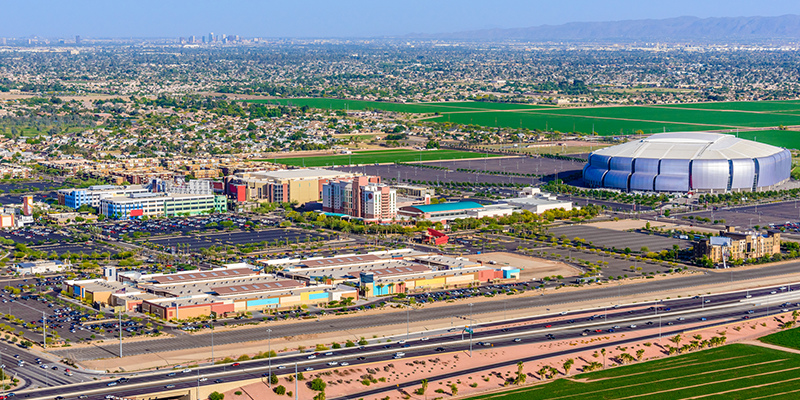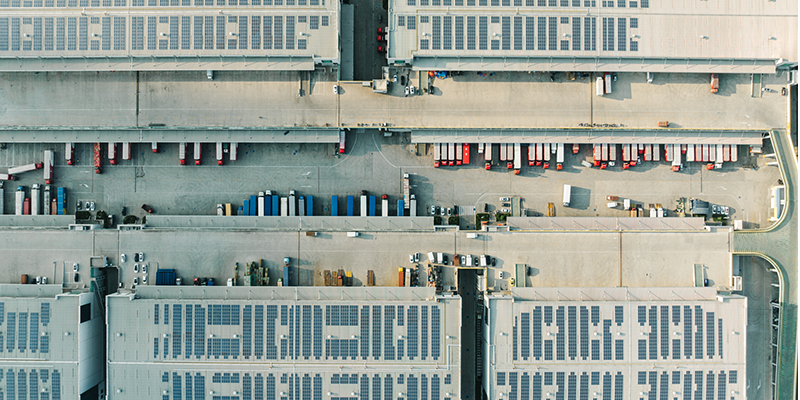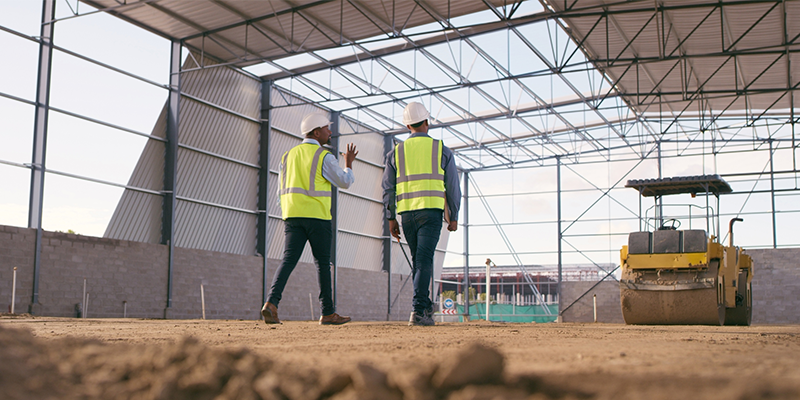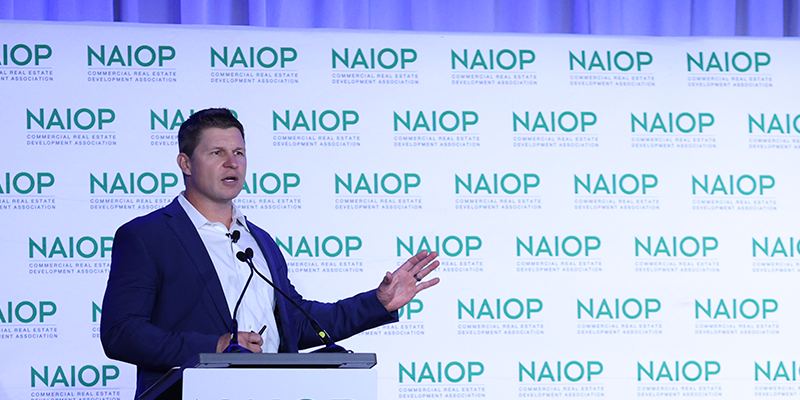By Marie Ruff
Does Phoenix have a dry heat or is it actually, unexpectedly, ice cold? Attendees of NAIOP’s I.CON Cold Storage this week in Phoenix had the opportunity to tour a trio of commercial real estate properties showcasing the breadth of the industry. The tour of the Glendale area started with a behind-the-scenes look at the iconic State Farm Stadium, home to the Arizona Cardinals NFL team.
While the team dates to the 1890s in Chicago, the team’s presence in Arizona began in the late 1980s. The Phoenix stadium broke ground in 2003, and just six months later was named the site of the 2008 Super Bowl.
The Arizona Sports and Tourism Authority (AZSTA) oversaw construction of the $455 million stadium and owns and operates it. The AZSTA gained funding from Proposition 302, which Maricopa County voters approved in 2000 to promote tourism – an important economic driver for Arizona – and sports in the region. The Arizona Tourism Board reports that in 2024, visitor spending reached a record $29.7 billion in the state, generating $4.3 billion in tax revenue for local, state and federal services and supporting 187,000 tourism jobs. The AZSTA also oversees the Cactus League, which hosts baseball spring training, and supports youth and amateur sports in Maricopa County.
World-renowned architect Peter Eisenman designed the stadium, which includes the NFL’s first retractable natural grass field. A number of star players and coaches, including Aaron Rodgers, say they prefer natural grass fields and consider it to contribute to fewer injuries than turf. One of the three smallest stadiums in the NFL with 63,400 seats, the State Farm Stadium has the capacity to add an additional 8,800 seats for mega-sporting events like the Super Bowl and college football bowl games.
Flexibility was built into the initial design of the stadium. The stadium can retract the natural grass field and bring in truckloads of sand to host events like Monster Jam and soccer tournaments, generating additional revenue. By the next Monday night NFL game, the natural grass field is back, and the stadium looks like it has only ever hosted professional football.
Special sensors in the field help monitor moisture levels, and ample time in the Arizona sun keep the grass growing thick and lush throughout the season.
In addition to the State Farm Stadium tour, I.CON Cold Storage attendees were able to visit VT 101, a 48-acre class A industrial park developed by VanTrust adjacent to Glendale’s sports and entertainment district. VanTrust, NAIOP’s 2023 Developer of the Year, is one of the nation’s largest privately held commercial real estate companies.
Phase 1 of the project included two buildings totaling just over 300,000 square feet, with 36-foot clear heights, full HVAC and LED lighting, ample dock and grade-level doors and 3,374-square-foot spec office suites. The site is built for modern logistics, distribution and plug-and-play operations.
For the final stop of the tour hosted by CBRE, attendees visited a 21,444-square-foot class A frozen distribution center. The center includes both cooler and freezer space (at a chill zero degrees Fahrenheit) and clear heights from 23 to 36 feet. The center is conveniently situated near major highways and distribution networks – ideal for facilitating the movement of temperature-controlled goods – and within a 10-minute drive of more than 1.2 million people.
Whether it’s the chill of a zero-degree freezer or the roar of a packed stadium, Arizona’s CRE landscape proves it can handle the heat – and the cold.








